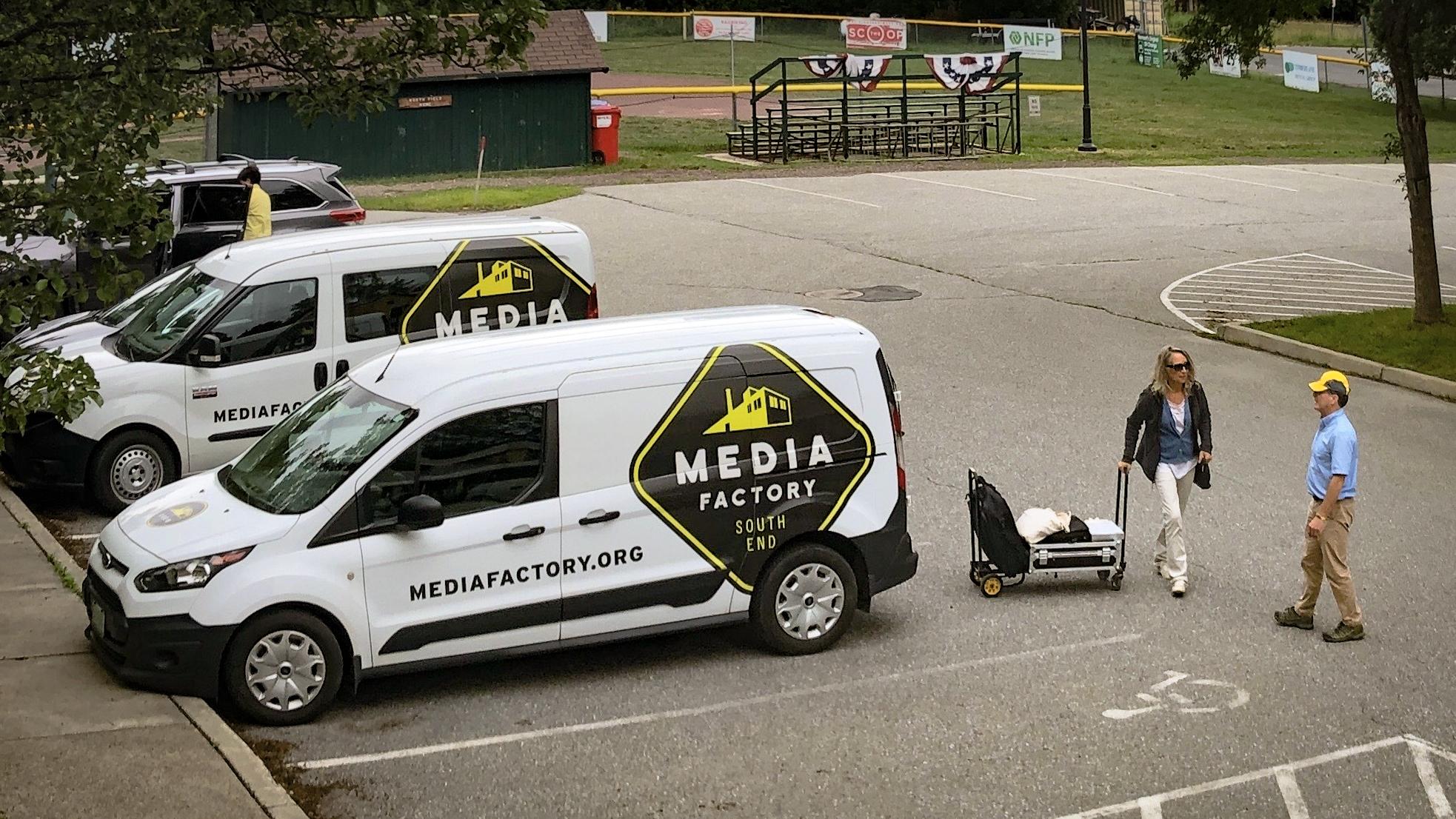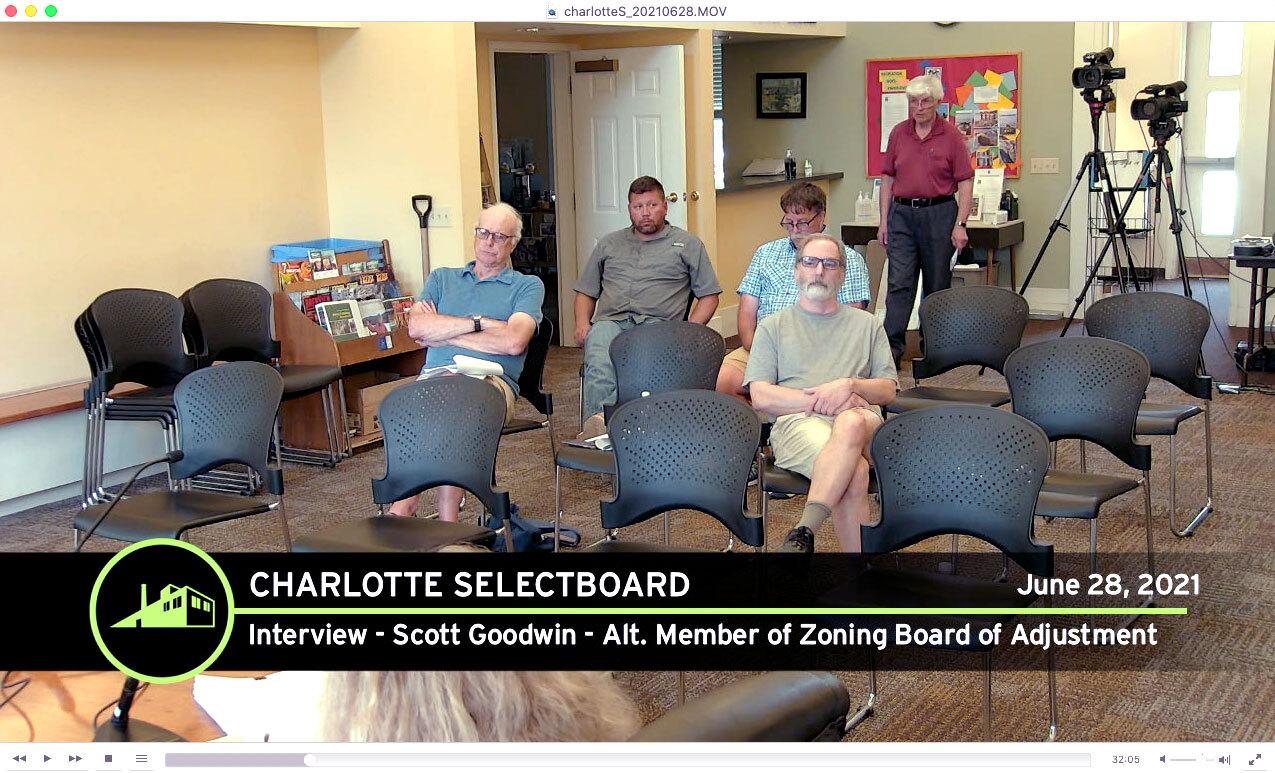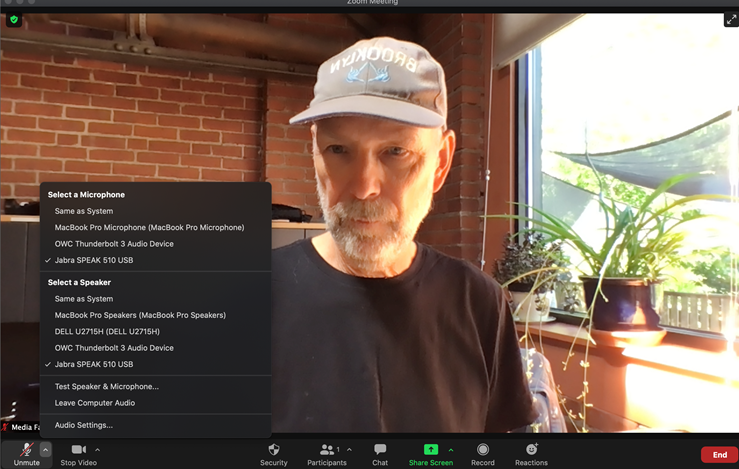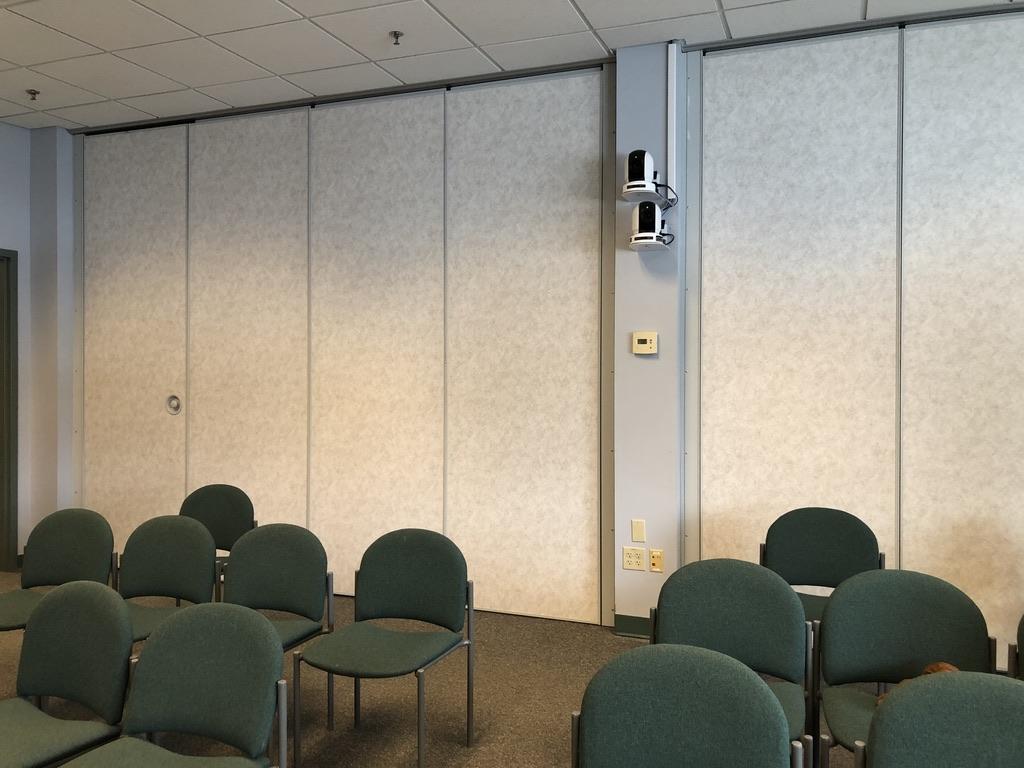Back to the Future for Municipal Meetings

As we revert back to the familiar meeting formats, we are also hurtling into the future with hybrid meetings.
On June 15th, 2021 Governor Scott allowed the state of emergency in Vermont to expire, along with most COVID-related restrictions. The next day we realized that the Zoom meetings we have all grown so accustomed to are no longer necessary. However, most of the fourteen municipal boards served by Media Factory have had increased public participation because of Zoom and plan to keep Zoom as an option for people to attend meetings. So as we revert back to the familiar meeting formats, we are also hurtling into the future with hybrid meetings.

Members of the public attend a hybrid meeting at Charlotte town hall
According to the Vermont League of Cities and Towns, under the Open Meeting Law, members of a public body may participate in a meeting electronically as long as there is a physical location where a member of the public can attend and participate in the meeting. At least one member of the body or at least one staff person or another designee must be present at that physical location.
Suddenly boards had to learn how to incorporate Zoom and other conferencing technologies into their normal setups (in addition to cleaning up their meeting rooms, which had often reverted to storage areas.)
Over the winter the Media Factory experimented with hybrid formats, most notably on Town Meeting Day. We learned that there is great potential for integrating our multi-camera live streaming production with the Zoom meetings hosted by a board. We also learned that there are a lot of things that can go wrong! The most notorious problems involve audio feedback and echoing. This is guaranteed to happen whenever more than one device is connected to the Zoom meeting and present in the same room. This problem can be avoided by ensuring that the speakers AND the microphone are turned off on the additional devices.
The Media Factory's first priority has been to help boards become self-sufficient at hosting hybrid meetings.
In response to the sudden mandate to create hybrid meetings, the Media Factory has adopted a two-phased approach. Since there will be hybrid meetings that we are not covering, our first priority has been to help boards become self-sufficient at hosting hybrid meetings. Generally, that means adding a webcam and a conferencing microphone to the laptop that hosts the Zoom meeting. We are recommending the Jabra Speak 710 conference mic (which also doubles as a speaker). However, getting good quality sound with a single conferencing microphone is challenging, especially for larger boards. In this case, two 710s can be linked together to provide better coverage for a large group.

Ken French explains how to connect different audio devices to a Zoom call.
Even with good audio and video coverage of the board members being sent to Zoom, in-person guests who speak from the audience are not likely to be picked up. The simplest approach will be to have the guests come up to the board table and use the same mic and webcam. Ultimately, boards will have to evaluate the importance of in-person guests being included in the Zoom meeting.
Phase two, which is already underway, includes integrating our production equipment into the Zoom meetings. In Hinesburg and Shelburne (and soon in Charlotte), we have remote-controlled cameras installed in the town halls. Here we are providing a video feed from our cameras to the board’s laptop in place of a webcam. Similarly, with the audio, our producer has as many as 10 microphones to choose from, so sending our mixed audio to the Zoom meeting will result in better coverage and can include audience mics.

Media Factory cameras in Shelburne Town Hall
This is obviously a work in progress. Aside from the technology integration, there are also new challenges to face with moderating hybrid meetings. Many boards are assigning someone to monitor the Zoom call for raised hands. Because of the risk of “Zoom-Bombing”, boards will have to continue policies around waiting rooms, pre-registration, and the use of chat features and screen sharing by guests.
The silver lining to all this is increased engagement by the public. Particularly for people with mobility or other accessibility challenges, the Zoom era has been a boon. Conversely, there are many with limited access to technology or broadband internet who will be glad to attend meetings in person again. Since meetings are live-streamed on our cable channels and at mediafactory.org/meetings (see “How to watch”), the public now has two options: use our live stream to watch meetings, or join the Zoom call to participate in meetings.
There is always more to learn, and the Media Factory will continue to work with municipalities to provide the best possible hybrid meetings for everyone in our community.
SCHOOL MEETINGS
| MEETING | CHANNEL | PAGE |
|---|---|---|
| Addison NW School District | LEARN Comcast 1094 | mediafactory.org/anwsd |
| Burlington School District | LEARN BT 16 + 216 Comcast 1094 |
mediafactory.org/bsd |
| Champlain Valley School District | LEARN Comcast 1094 |
mediafactory.org/cvsd |
| Essex Westford School District | LEARN Comcast 1094 |
mediafactory.org/ewsd |
| South Burlington School District | LEARN Comcast 1094 |
|
| Winooski School District |
LEARN Comcast 1094 |
mediafactory.org/wsd |
TOWN MEETINGS
| MEETING | CHANNEL | PAGE |
|---|---|---|
| Charlotte Selectboard | ENGAGE Comcast 1084 | mediafactory.org/charlotte |
| Hinesburg Selectboard, Development Review Board, Planning Commission |
ENGAGE Comcast 1084 | mediafactory.org/hinesburg |
| Shelburne Selectboard, Development Review Board, Planning Commission |
ENGAGE Comcast 1084 | mediafactory.org/shelburne |
| Vergennes City Council | ENGAGE Comcast 1084 | mediafactory.org/vergennes |
